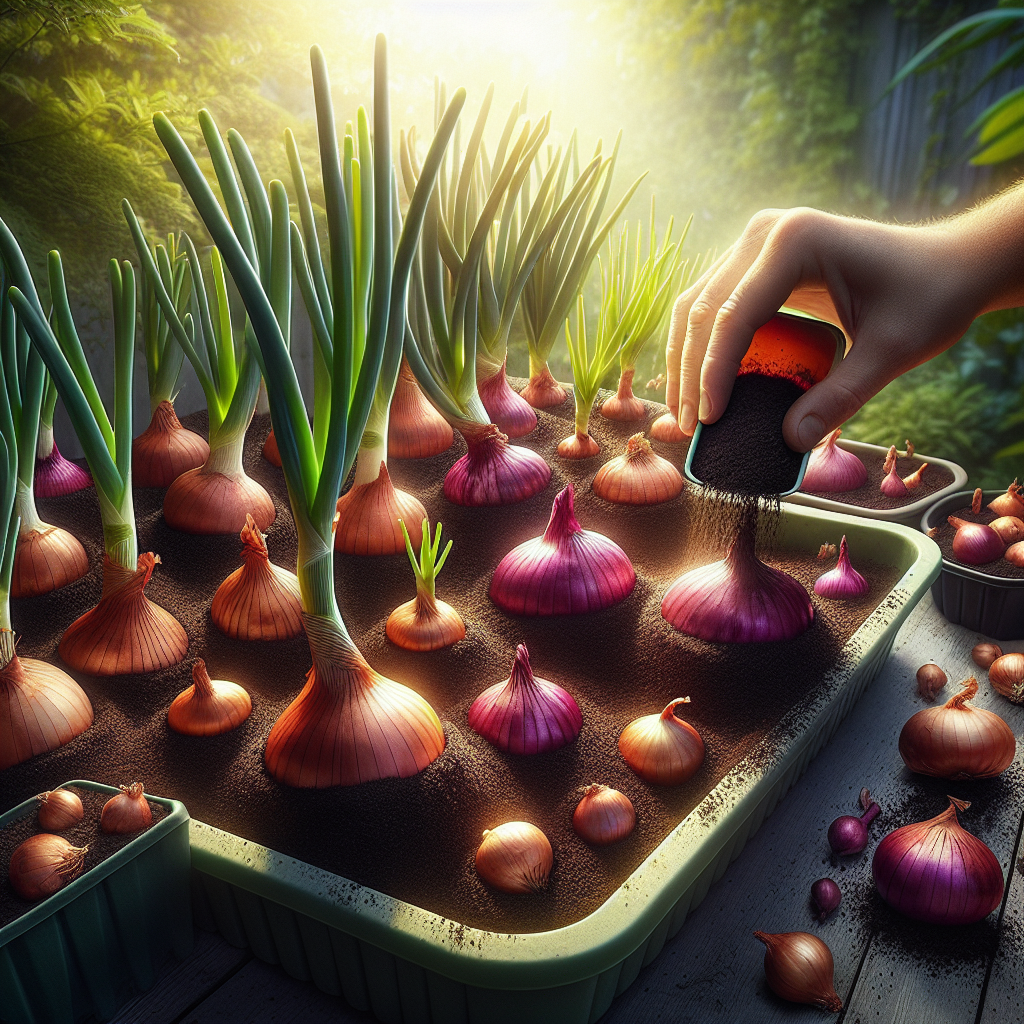Onions are a versatile and essential ingredient in many culinary dishes. They add flavor and depth to a wide variety of recipes, from salads and salsas to soups and stews. But growing onions can be a bit tricky, especially if you have limited space in your garden. Container gardening is a great solution for growing onions in small spaces, as long as you use proper placement techniques to ensure your onions thrive.
Choosing the Right Container
When it comes to container gardening, the first step is choosing the right container for your onions. Onions have long taproots that need room to grow downward, so it’s important to choose a container that is at least 12 inches deep. A wider, more shallow container will also work well for growing onions, as long as it has adequate drainage holes in the bottom.
You can use any type of container for growing onions, including plastic pots, ceramic planters, or even recycled containers like buckets or crates. Just be sure to clean and sanitize the container before planting your onions to prevent any potential diseases or pests from affecting your plants.
Choosing the Right Soil
Onions prefer well-draining soil that is rich in organic matter. A good potting mix for growing onions in containers should contain a mixture of peat moss, perlite, and vermiculite to ensure good drainage while retaining moisture. You can also add compost or aged manure to the soil mix to provide additional nutrients for your onions.
Fill your chosen container with the potting mix, leaving a few inches of space at the top for planting your onion sets or seedlings. Water the soil thoroughly before planting to help settle it and provide moisture for your onion plants.
Planting Your Onions
Onions can be grown from seeds, sets, or transplants. If you’re starting from seeds, sow them directly into your container about ½ inch deep with about 1 inch between each seed. Cover lightly with soil and water gently.
If you’re using onion sets or transplants, plant them about 1 inch deep with about 4-6 inches between each plant. Onions do best when they have room to spread out their roots and grow without being crowded by neighboring plants.
Once you’ve planted your onion seeds or sets, water them gently but thoroughly until the soil is moist but not waterlogged. Onions prefer consistent moisture throughout their growing season but can rot if they are overwatered.
Placement Techniques for Container Gardens
Proper placement of your onion container garden is key to ensuring that your plants receive adequate sunlight and airflow while also staying protected from extreme weather conditions. Here are some placement techniques for growing onions in containers:
1. Choose a Sunny Spot: Onions require full sun to thrive and produce healthy bulbs. Choose a spot on your patio or balcony that receives at least 6-8 hours of direct sunlight each day.
2. Provide Adequate Airflow: Proper airflow around your onion plants will help prevent diseases like powdery mildew and downy mildew from affecting them. Place your containers in an area where they will receive gentle breezes throughout the day.
3. Protect from Extreme Weather: Onions are sensitive to extreme heat and cold temperatures. If you live in a hot climate, consider placing a shade cloth over your onion containers during the hottest part of the day to protect them from sunburns. If you live in a cold climate, consider moving your containers indoors on frosty nights or providing insulation around them with blankets or straw mulch.
4. Rotate Your Containers: To prevent uneven growth and potential diseases like damping off from affecting your onion plants, rotate their containers every few days so that all sides receive equal amounts of sunlight and airflow.
5. Water Wisely: Onions prefer consistent moisture throughout their growing season but can rot if they are overwatered. Check the moisture level of your soil regularly by sticking your finger into it up to the first knuckle – if it feels dry, water thoroughly until excess water drains out of the bottom of the container.
Harvesting Your Onions
Onions take about 90-120 days to reach maturity depending on the variety you’re growing – green onions can be harvested earlier while bulb-forming varieties take longer to mature.
When harvesting green onions (also known as scallions), simply pull them out of the ground when they reach about 6-8 inches tall – these young shoots are delicious raw in salads or cooked in stir-fries.
For bulb-forming varieties like yellow, white or red onions – wait until most of their tops have turned brown before pulling them out of the ground.
Allow harvested bulbs to cure by spreading them out on a dry surface like a patio table or screen for several weeks until their outer skins dry completely – then trim off any excess roots and store them in a cool dark place like an unheated garage until ready for use.
In conclusion,
Growing onions in containers is an excellent way for gardeners with limited space
to enjoy this versatile vegetable straight from their patio or balcony.
By following proper placement techniques such as choosing
the right size pot with good drainage,
using well-draining soil rich in organic matter,
and planting at
the correct depth with adequate spacing,
you’ll ensure that
your onion plants thrive throughout
their entire growing season.
With consistent care through watering,
fertilizing,
inspecting
for signs
of pests/diseases,
and harvesting bulbs at peak maturity when ready–you’ll enjoy fresh homegrownonionsthat are tasty flavorful year-round!














